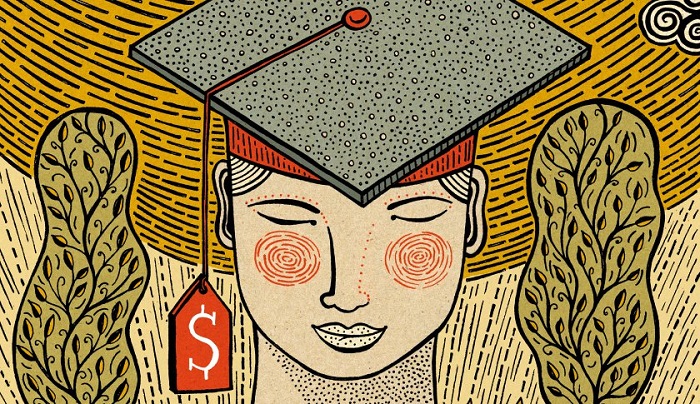
Believe it or not, a new study says that student loan borrowers are doing just fine.
Earlier this month, when President Barack Obama announced a plan to give more student loan borrowers access to an income-based repayment plan, he illustrated the trouble college students and recent graduates face by telling the story of a woman named Ashley from Santa Fe. Ashley, the president said, wrote to tell him that at not even 30 years old, she’d given up on her future because she “can’t afford to have one.”
But Ashley might be an exception, according to a new report from the Brown Center on Education Policy at the Brookings Institution.
While much has been made about the nation’s trillion dollars worth of student loans, which now exceeds American’s auto and credit card debt, the study finds that there’s little evidence that a crisis is looming. “Our analysis of more than two decades of data on the financial well-being of American households suggests that the reality of student loans may not be as dire as many commentators fear,” the study says.
The nation would be approaching a crisis, says the report’s co-author Matthew Chingos, if Americans couldn’t repay their debt and weren’t seeing a payoff for their investment in the long run. On both points, the study finds, just the opposite is true.
There’s no doubt that the average American’s student loan debt level is rising; it jumped from $6,000 to $16,000 between 1989 and 2010 for a bachelor’s degree and from $10,000 to $40,000 for a graduate degree, including loans taken out by law, medical, and business school students. Part of that increase, the study says, can be attributed to more Americans pursuing more education: in 1989, a bachelor’s degree was the highest level of education for 20% of households; that figure jumped to 24% in 2010. The portion of households with graduate degrees increased from 9% to 13% over the same period, while the share of households with no college experience dropped from 41% to 31%.
And all that education is paying off, even if it requires a loan.
Households with outstanding student loan debt have seen their average income increase from just under $43,000 in 1992 to just over $50,000 in 2010. The Brown Center study found that the increased earnings over the course of a lifetime more than compensate for the rise in student loans taken out by a typical household. With that $7,411 increase in annual earnings, the average household could pay off the $18,000 more they’ve assumed in student debt in 2.4 years.
But just because a degree—and the debt it often requires—results in long-term benefits, borrowers could very well squeezed by loan payments in the short term, right?
The Brown Center examined this issue by taking into account the ratio of borrowers’ monthly loan payments to monthly income and found that borrowers’ median monthly loan payments had equaled about 3% to 4% of their monthly earnings every year from 1992 to 2010. And mean monthly payments as a percentage of income had actually declined over that period from 15% to 7%.
These findings were so surprising that the authors reran the numbers “about 10 times,” Chingos says. But there’s a simple explanation: because consolidated federal loans are now eligible for extended repayment terms, borrowers have more time to pay off their loans—about 13.4 years in 2010, versus 7.5 years in 1992—so they’re paying in smaller increments.
All these figures help make the case that while student loan debt is often discussed as a problem in and of itself, “increases in debt may simply be a benign symptom of increasing expenditure on higher education.” And the notion that today’s student loan borrowers have it worse off than those who took on debt a generation ago is false. “The … burden of loan repayment is no greater for today’s young workers than it was for younger workers two decades ago. If anything, the monthly repayment burden has lessened,” according to the study.
Then again, just because a wave of student loan defaults is not imminent doesn’t mean we should ignore young adults’ swelling student debt. If borrowers can, on the whole, pay their student loans with their own income, as the Brown Center study suggests, imagine how much better off they’d be if they were paying off less debt.
















